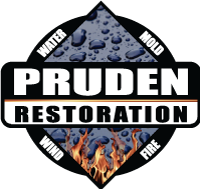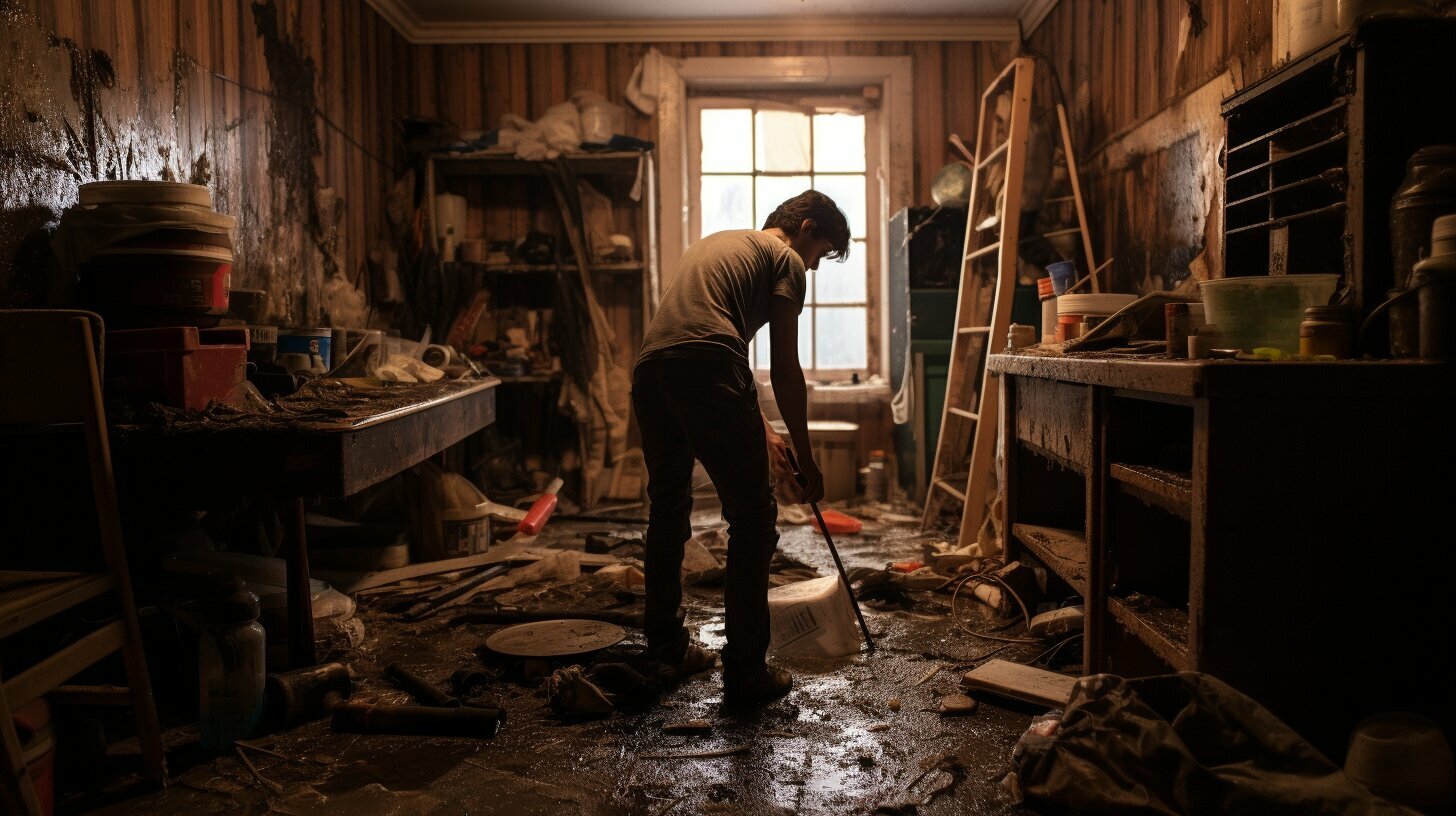Water damaged walls require immediate attention and proper treatment to prevent long-term issues and restore the affected area. When left unaddressed, water damage can lead to cracked, peeling, and buckling walls, as well as mold and mildew growth. To effectively treat water damaged walls, it is crucial to control the issue and repair the damage as quickly as possible.
Start by drying out the affected wall thoroughly. Remove any remaining water by draining it and use fans and dehumidifiers to speed up the drying process. Allow sufficient time for the wall to dry completely before proceeding with the repairs.
Once the wall is dry, assess the damage and remove any structurally compromised drywall. Replace the damaged section with new drywall patches or sheets. Fit the new drywall patch into the hole and secure it with screws and joint compound.
After securing the new drywall, smooth the patch and apply texture and paint to match the surrounding wall. This step helps to blend in the repair seamlessly and restore the aesthetic appeal of the affected area.
It is important to address water damage promptly to prevent mold growth. If the damage is extensive or if black mold is present, it is advisable to seek professional help. Professionals have the expertise and tools necessary to handle severe water damage and ensure thorough restoration.
Key Takeaways:
- Treating water damaged walls requires prompt action and proper repairs to prevent further problems.
- Dry out the affected wall thoroughly by draining any remaining water and using fans and dehumidifiers.
- Replace structurally compromised drywall with new patches or sheets.
- Secure the new drywall with screws and joint compound, then smooth, texture, and paint to match the surrounding wall.
- Seek professional help for extensive damage or black mold growth.
Steps to treat water damaged walls
To effectively treat water damaged walls, follow these essential steps for optimal restoration and repair:
- 1. Dry out the affected wall: Begin by draining any remaining water from the wall. Use fans and dehumidifiers to accelerate the drying process. Allow sufficient time for the wall to dry completely before proceeding.
- 2. Remove damaged drywall: Inspect the wall for any structurally compromised drywall. Carefully remove the damaged sections, taking care not to cause further damage. Dispose of the damaged drywall safely.
- 3. Replace with new drywall patches or sheets: Measure and cut new drywall patches or sheets to fit the openings in the wall. Fit the new drywall patch into the hole and secure it with screws and joint compound.
- 4. Smooth, texture, and paint: Once the new drywall patch is secure, smooth the patch and apply texture to match the surrounding wall. Allow the texture to dry and then paint the entire wall, blending the new patch with the existing paint.
Seek professional help for extensive damage or black mold
It is important to address water damage promptly to prevent mold growth. However, for extensive damage or the presence of black mold, it is advisable to seek professional help. Professionals have the expertise and specialized equipment to handle complex restoration projects and ensure thorough mold remediation.
By following these steps and taking prompt action, you can effectively treat water damaged walls and restore the integrity of your home. Remember, prevention and quick intervention are key to minimizing damage and maintaining a safe and healthy living environment.
| Pro Tip: | To prevent future water damage, address any underlying issues that may have caused the initial damage. This could involve fixing leaks, improving drainage systems, or enhancing insulation in vulnerable areas. |
|---|
Professional advice for water damage restoration
When dealing with extensive water damage or black mold growth, it is advisable to seek professional assistance for proper restoration and to ensure your safety and well-being. Water damage can have serious consequences, including compromised structural integrity, mold growth, and potential health hazards. Professional water damage restoration experts have the knowledge, experience, and equipment to effectively address the damage and prevent further issues.
To begin the restoration process, professionals will assess the extent of the water damage and develop a comprehensive plan for repair. They will identify the source of the water intrusion and take necessary steps to stop it, ensuring that no further damage occurs. They will also prioritize the drying process, using specialized equipment such as industrial-grade dehumidifiers and high-powered fans to thoroughly dry the affected areas.
In cases where the water damage has resulted in significant structural damage, professionals may need to remove and replace damaged drywall, insulation, or other building materials. They will carefully evaluate the impact of the water damage and determine the best course of action to restore the affected areas. This may involve removing mold-infested materials, applying antimicrobial treatments, and installing new drywall or other materials.
| Benefits of professional water damage restoration |
|---|
| Expertise and knowledge in dealing with water damage |
| Access to specialized equipment for efficient drying |
| Thorough assessment and identification of hidden damage |
| Prevention of future mold growth and structural issues |
| Peace of mind knowing the restoration is handled professionally |
By engaging professional water damage restoration services, you can be confident that the damage will be properly addressed, and your property will be restored to its pre-damage condition. They will not only repair visible damage but also identify and mitigate any hidden issues that can lead to further problems down the line.
Conclusion
Properly treating water damaged walls is essential to prevent mold growth, restore the affected area, and maintain the structural integrity of your walls. Water damage can cause walls to crack, peel, and buckle, creating an unsightly and potentially hazardous environment. To address the issue, it is crucial to take immediate action.
Start by drying out the affected wall thoroughly. Drain any remaining water and use fans and dehumidifiers to promote drying. Allow sufficient time for the wall to dry completely before proceeding to the next step. By doing so, you can minimize the risk of mold and mildew growth, which can lead to health issues.
Once the wall is dry, it is important to remove any structurally compromised drywall. Replace it with new drywall patches or sheets, ensuring a proper fit. Secure the new drywall patch with screws and apply joint compound to create a seamless finish. Finally, smooth the patch, apply texture, and paint to match the surrounding wall, restoring its appearance and integrity.
If the water damage is extensive or there is black mold growth, seeking professional help is highly recommended. Professionals have the expertise and equipment to handle complex water damage restoration, ensuring a thorough and effective treatment.
Remember, addressing water damaged walls promptly is crucial to prevent further problems and maintain the value of your property. By following the appropriate steps and seeking professional assistance when necessary, you can restore your walls to their pre-damaged state and create a safe and healthy environment for you and your loved ones.
FAQ
How do you treat water damaged walls?
To treat water damaged walls, start by drying out the affected wall by draining any remaining water, using fans and dehumidifiers, and allowing sufficient time for the wall to dry completely. Once dry, remove any structurally compromised drywall and replace it with new drywall patches or sheets. Fit the new drywall patch into the hole and secure it with screws and joint compound. Smooth the patch and apply texture and paint to match the surrounding wall.
What are the steps involved in treating water damaged walls?
The steps to treat water damaged walls include drying out the affected wall, removing damaged drywall, replacing it with new patches or sheets, securing the new drywall, and applying texture and paint to match the surrounding wall.
When should I seek professional help for water damage restoration?
It is advisable to seek professional help for extensive water damage or the presence of black mold. Professionals have the expertise and equipment to handle such situations and ensure proper restoration and mitigation of health risks.
Why is it important to address water damage promptly?
Promptly addressing water damage is crucial to prevent further damage to the walls, such as cracking, peeling, or buckling. It also helps prevent mold and mildew growth, which can pose health risks and require more extensive restoration efforts.










